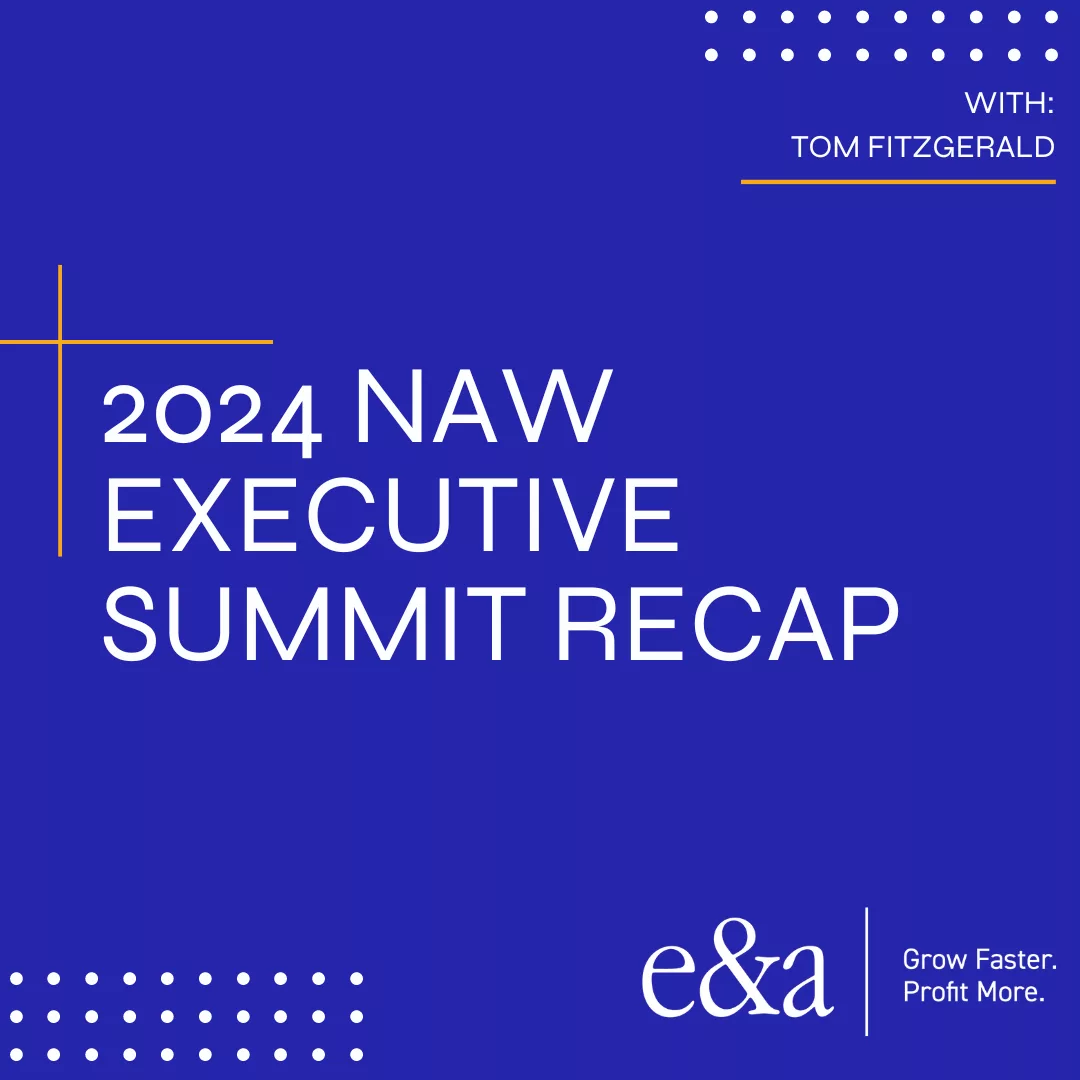
The overriding message from the 2024 NAW Executive Summit this year had a lot to do with the economic forecast for the next seven years. “Planning ahead” doesn’t mean mapping out a strategy for the next few years. Instead, leaders need to lay the appropriate groundwork in 2024 and even 2025 in preparation for what is predicted to be a strong recessionary environment several years from now in 2030.
There was no one better to discuss that topic than Alan Beaulieu, President and Principal at ITR Economics™, a well-known economic research and consulting firm. They’re the ones who warned us in January 2006 that a significant recession was coming, and they predicted the low point as well as how fast the U.S. would recover. And they were right.
Leaders who had the advantage of hearing from Beaulieu in his 2006 address were much more prepared for 2008. His message this year carried similar notes: now is the time for businesses to get their processes, tools, and people in order while the economy is strong heading for 2025 and 2026. Those who do will fare better in 2030 than those who procrastinate maturing these critical operational dimensions of their organizations.
Create a Path to AI for Business Processes
One of the big differentiators for businesses in the next few years will be when and how well they adopt Artificial Intelligence (AI). AI is a business reality, whether we like it or not—and whether we’re ready for it or not. Forward-looking businesses are going to get ready for it now.
Thoughtful planning is of paramount importance. because you can’t go from zero to AI overnight. It’s a revolutionary tool, but it requires some level of revolution in your business to leverage. Undoubtedly, every business has a set of employees who are comfortable as early adopters and intrigued by AI. These are the people who are working on their own to find ways to use AI to make themselves more productive. But integrating AI into your operations organization-wide takes some work. Here are the steps that you can take to ensure you’re ready for the revolution:
- Master your business processes. AI will have a role in changing your business processes. To be effective, make sure you’ve streamlined your processes to allow the insight provided by AI to help you do what you need to do, not what you’ve always done.
- Collect all the data you can. Data will of course always be a critical enabler of decision making. What remains to be seen is the extent to which AI will impact how organizations collect, warehouse, review and analyze that data. As AI continues to provide advanced analytic capabilities, companies would be wise to gather all data accessible to them, including data they may not incorporate into current processes and decisions, which will in turn allow them to take advantage of AI-driven capabilities that can’t yet be predicted.
- Manage change. As AI becomes more prevalent, it’s only natural that employees might be fearful of what the technology will mean to their jobs. At this time, employees’ views are contradictory. Microsoft research found that 49% of employees are concerned about the effect AI will have on their jobs. On the other hand, 70% of employees are quite positive about the idea of delegating to AI to make their jobs easier. Establish a culture of curiosity, not fear.
- Get comfortable with failure. Encourage employees to be creative in reimagining how their work could change with an AI boost. Establish a “try it and learn” approach that will lead your organization to find the best ways to use AI to meet business needs.
Optimize Existing Tools
Integrating AI into business operations doesn’t mean that existing tools are obsolete. Take ERP for example. Some have proposed that ERP’s critical role in gathering data will diminish as data moves closer to the user and AI gives users more powerful analysis tools.
The message from the conference? Nothing could be farther from the truth. In the age of AI, ERP will play an advanced role in gathering the largest range of data possible and passing that data to the user faster, in ways that elevate the decision-making process.
Attract the Next Generations of the Workforce
Several conference presenters at the NAW Executive Summit honed in on the message that companies need to start reengineering their organizations now to render themselves attractive to the coming generations of the workforce. That reengineering must consider the needs and expectations of employees, customers, vendors, and suppliers, all of whom will expect that organizations will have the latest tech tools to enhance their performance.
Finally, the labor shortage isn’t going away. This issue was discussed at the NAW Summit last year, and it’s still true today. Recruiting efforts need to throw a wide net and start sooner. Give consideration to:
- Using marketing initiatives to attract talent. Your business can be explained in a much more compelling way in a video than in a blog post.
- Recruiting at the high school and college levels. Educate the future talent pool about the types of opportunities they can pursue in your company.
- Looking ahead five years. Plant the seeds for recruiting the talent you’ll need in five years.
With the advent of AI, a wave of change has started, and more are coming. Businesses that prepare during the strong economy by addressing issues related to processes, tech tools, and talent will have a much easier ride through the recession that is predicted to follow.








